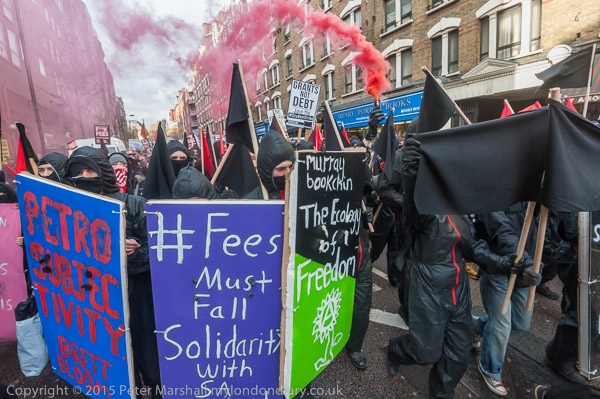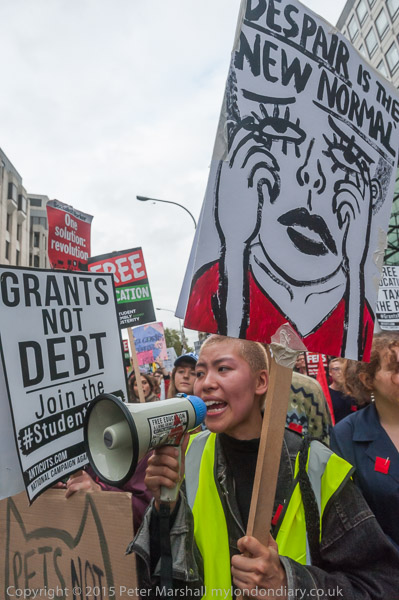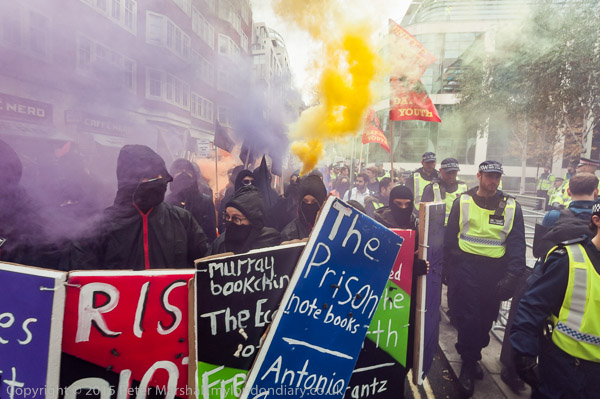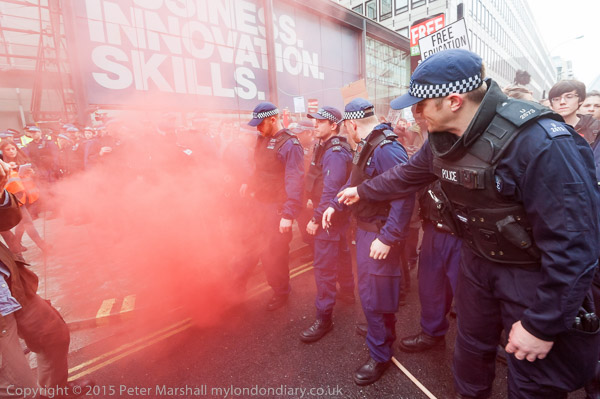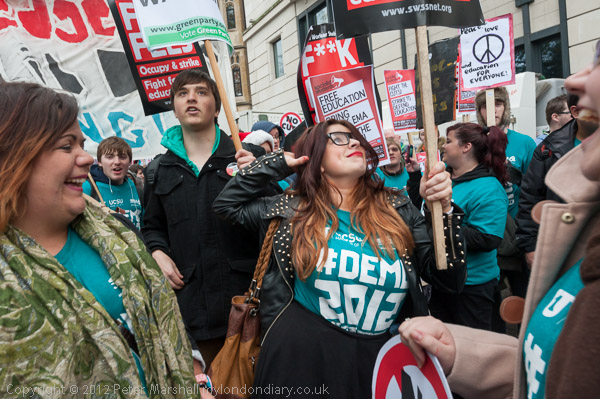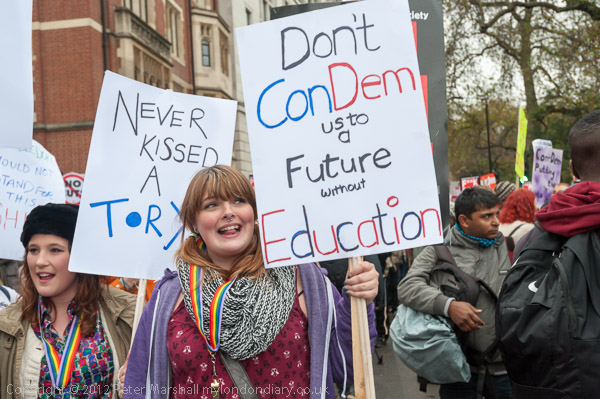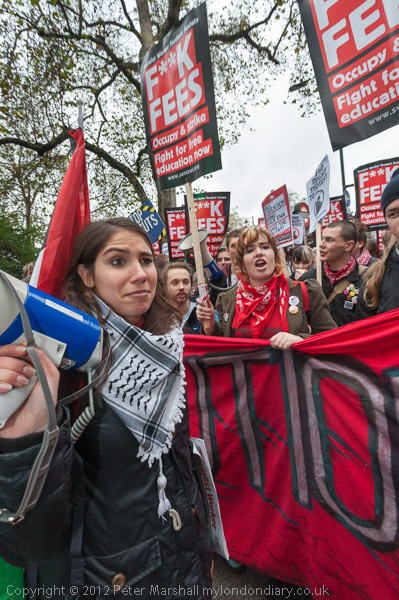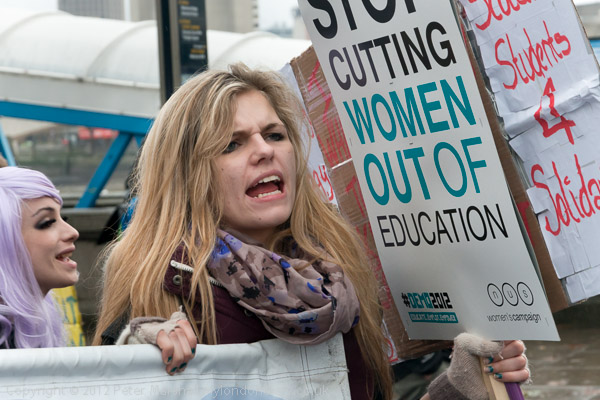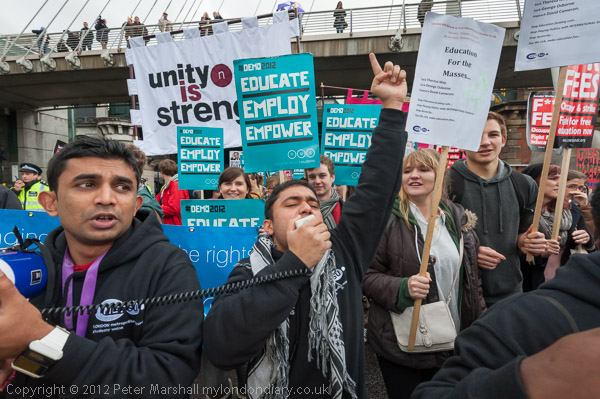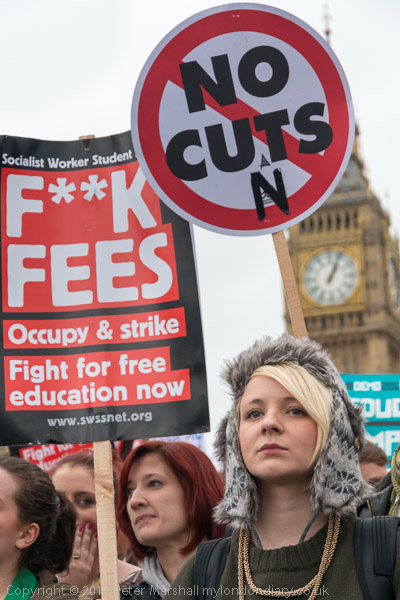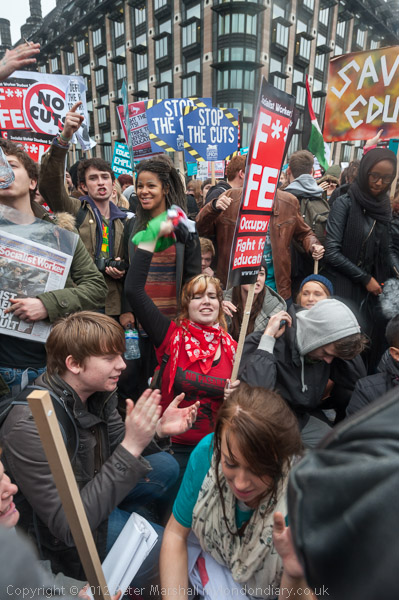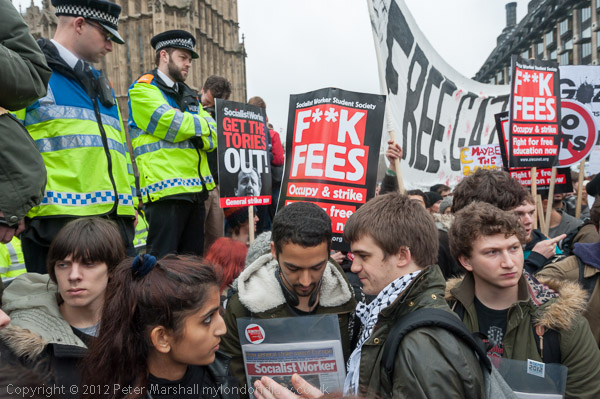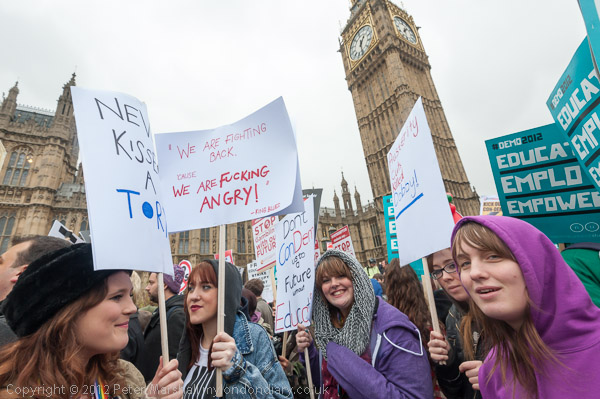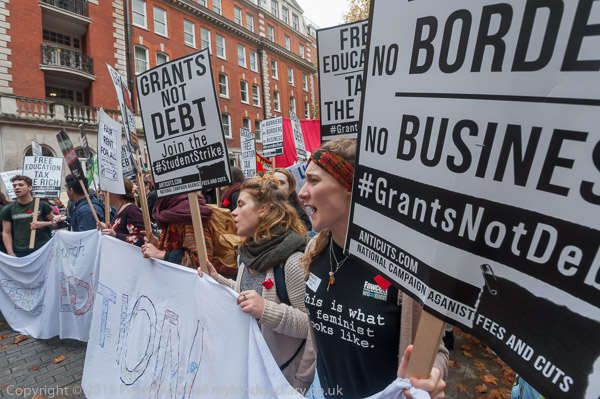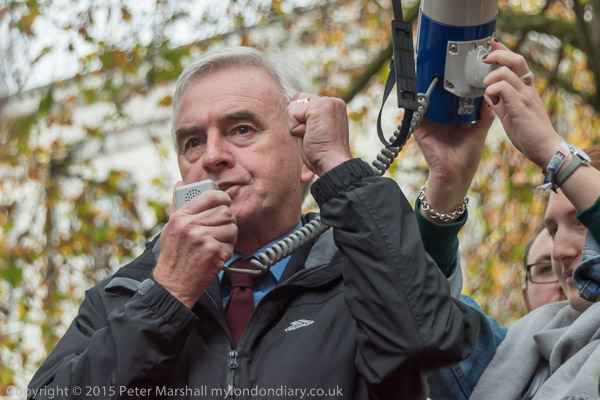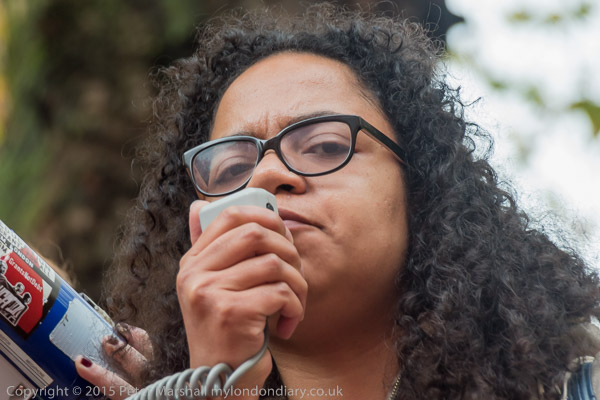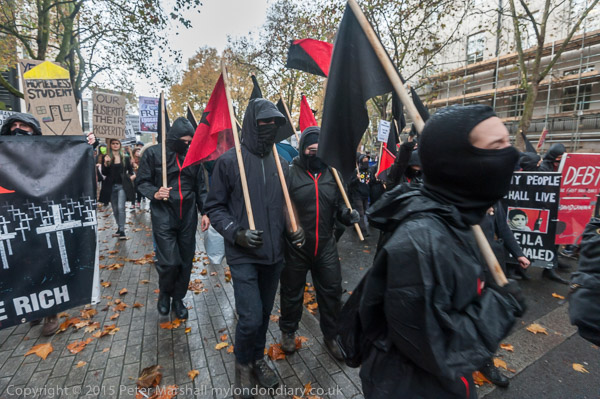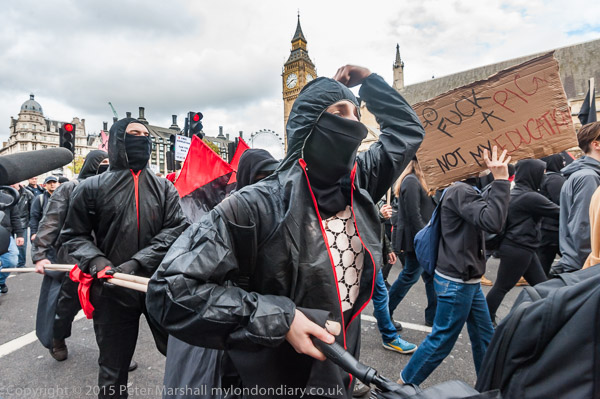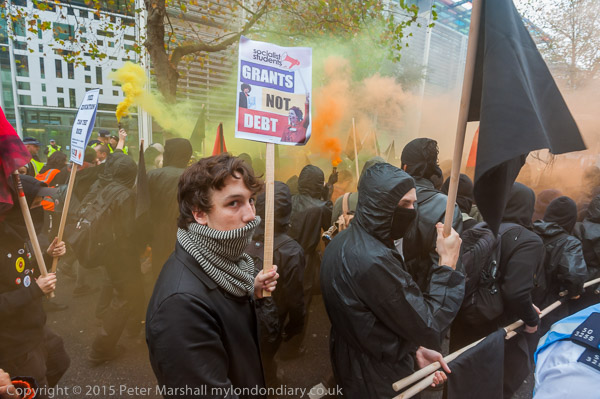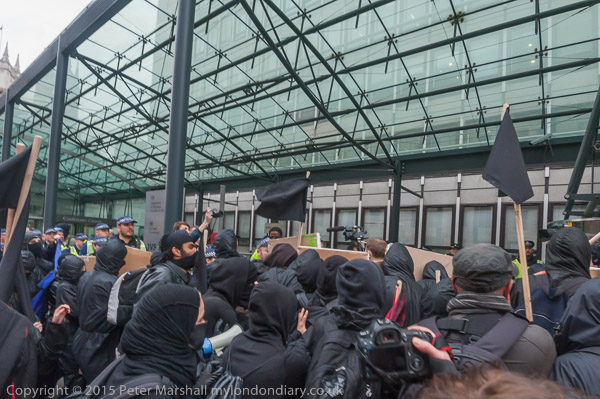Grants Not Debt Protest Blocks Bridge: The previous week a parliamentary committee had scrapped the means-tested maintenance grants for for students and on Tuesday 19th January 2016 the National Campaign Against Fees and Cuts (NCAFC) organised a rally and protest to support that day’s Labour party debate against the action and the government’s flagrant denial of democratic process.
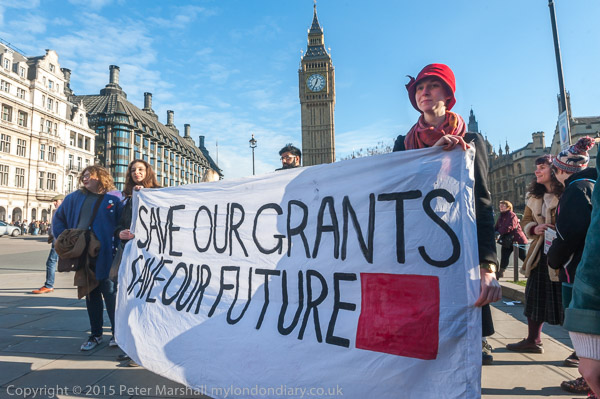
Student maintenance grants to cover living costs were brought in in 1962, nicely in time for me to go to university the following year. Before that students from poorer homes had been reliant on awards by their counties, some more generous than others. UK students then paid no fees for their courses, and though New Labour abolished the grants in 1999 they brought them back in 2006 when they brought in higher course fees.

In his 2015 budget, Tory Chancellor George Osborne had announced the intention to abolish grants and replace them with increased maintenance loans.
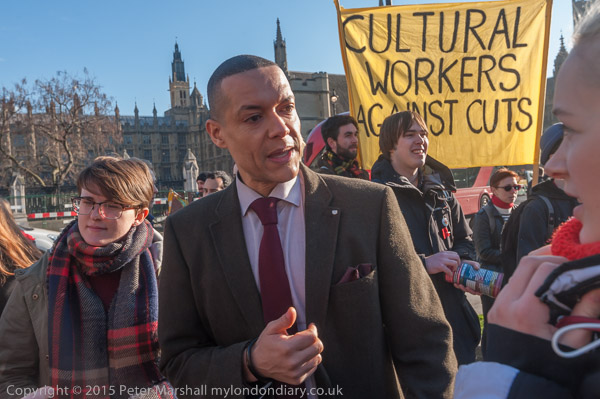
But the change was only actually brought in by a committee vote under the Education (Student Support) (Amendment) Regulations 2015. The Third Delegated Legislation Committee approved the changes for students beginning their courses in the 2016/17 academic year on Thursday 14 January 2016 by ten votes to eight.

The amount of money students would be eligible to receive would not be changed (it would actually increase by inflation) but it would very nearly double the amount of debt for students from the poorest homes who had qualified for the full grant who would now end a three year course owing around £35,000 extra. Of course these amounts have greatly increased since 2016.
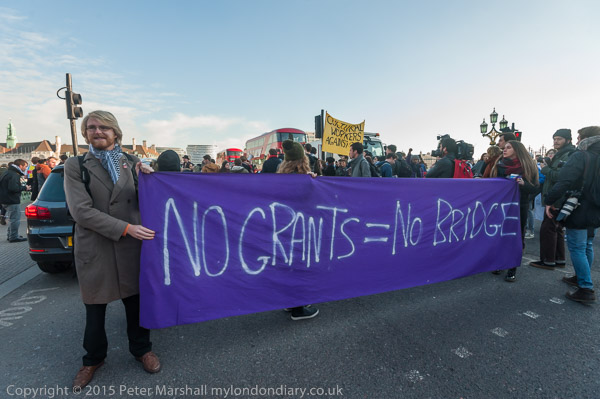
Students living in London – as many of those at this protest were – would in 2025/6 be eligible for a maintenance loan of £13,762 in their first year – and a total well over £40,000 for their 3 year course. With the cost of tuition fees this would bring their total student loan up to around £70,000.

The rally began in Parliament Square and there were a number of speeches including from Labour Shadow Minister in Department of Energy and Climate Change Clive Lewis MP and Shelly Asquith the NUS Vice President (Welfare).

At the end of her speech the students decided it was time to take some action and began to march past the Houses of Parliament onto Westminster Bridge. Some had brought a banner ‘NO GRANTS = NO BRIDGE’.
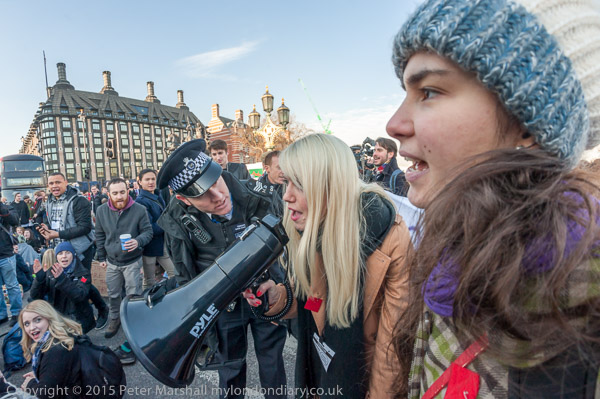
On the bridge many of them sat down while others remained standing with their banners and traffic was blocked. A police officer tried to persuade Shelly Asquith to get the protesters to move but she ignored him and the protest continued.

Eventually the police managed to clear the north-bound carriage way but the protest continued to block traffic going south.

After an hour or so the protest appeared to be dying down, with some students leaving and although the protest was still continuing I decided to go too.
Many more pictures on My London Diary.
Flickr – Facebook – My London Diary – Hull Photos – Lea Valley – Paris
London’s Industrial Heritage – London Photos
All photographs on this page are copyright © Peter Marshall.
Contact me to buy prints or licence to reproduce.


